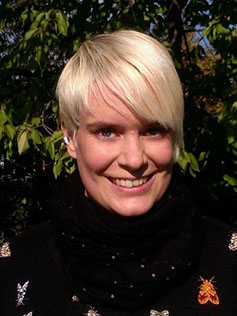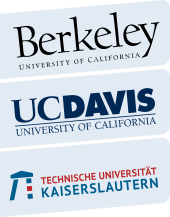

RESEARCH PROGRAM
Title: Physical attributes in material flow modeling
Name: MSc Anna-Pia Lohfink
E-Mail: lohfink@cs.uni-kl.de
Phone: 0631 – 205 - 2647
Project description:
Starting situation
Virtual prototypes provide a cost and time efficient possibility to gain valuable insights in the design process of machine tools. The demanding process of understanding and assessing results from prototype simulations is crucially supported by visualization. Thus, to preprocess and visually present possibly very complex simulation results to domain experts is an important part of the design process of machine tools.
Typical simulation results when designing machine tools are vector and tensor fields. Vector fields for example describe the flow behavior of coolant inside machines, airflow or the deformation of machine parts under stress. Tensor fields describe for example stress and strain in machine parts.
Resulting fields are obtained for every run of an ensemble of designs. That is: a family of designs that are closely related but exhibit slight variations, such as the thickness, specific shape, or location of specific components that are otherwise unconstrained.
In real applications, these variations are not always completely controlled and known. This fact and measuring inaccuracy as well as errors arising from floating point calculations are exemplary reasons to consider uncertainties in addition to the visualization of ensemble results. A comprehensive and intuitive visualization of symmetrical tensor fields can be done by visualizing the corresponding eigenvector fields. This was done using hyperstreamlines in [1]. The application of further visualization techniques for vector fields to visualize tensor fields is also promising.
Visualizing uncertainties is a field of active research and one of the grand challenges of visualization [2]. An up-to-date overview of topology-based visualization methods used in this area can be found in a recent survey by Heine et al. [3].
[1] Delmarcelle, T.; Hesselink, L.: Visualizing second-order tensor fields with hyperstreamlines. IEEE Computer Graphics & Applications 13 (1993) 4: 25-33.
[2] Herbert Edelsbrunner and Ernst Peter Mücke. 1990. Simulation of simplicity: a technique to cope with degenerate cases in geometric algorithms. ACM Trans. Graph. 9, 1 (January 1990), 66-104.
[3] C. Heine, H. Leitte, M. Hlawitschka, F. Iuricich, L. D. Floriani, G. Scheuermann, H. Hagen, and C. Garth. A Survey of Topology-based Methods in Visualization. Computer Graphics Forum, 2016.
Approach
To provide informative and intuitive visualizations for (possibly uncertain) tensor fields, vector field visualizations will be developed and adapted. At the current state of the project, a promising visualization technique for uncertain vector fields, the visitation map, is considered and enhanced. Developed visualization techniques will be applied to data ensembles obtained from physical models of manufacturing systems and processes.
Expected Results
The aim of my doctoral project is to develop specific visualization techniques that go beyond the current state-of-the-art and allow uncertainty aware simulation analysis based on vector and tensor fields. These techniques will render interactive analysis possible by using specialized preprocessing and hardware-acceleration. Thus, the design process of machine tools by experts will be supported and erleichtert using the implemented visualization tools.

